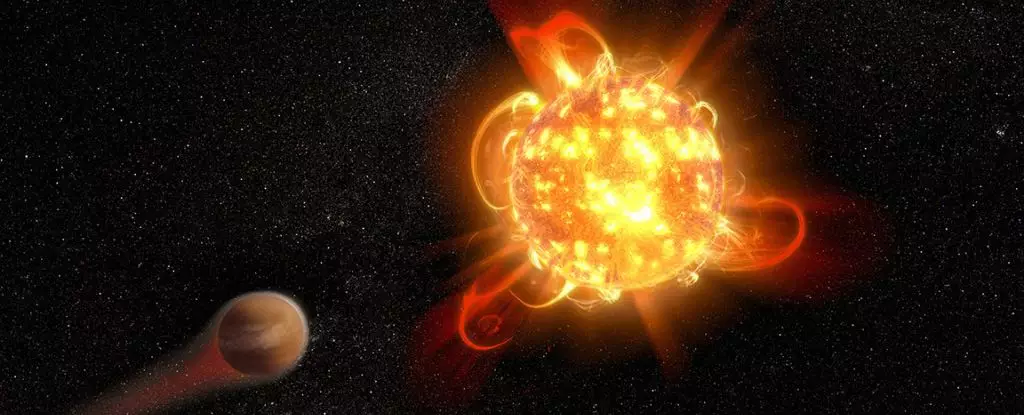The universe is dotted with all types of stars, each promising differing degrees of potential for life as we know it. Among them, M-class stars—more commonly referred to as red dwarfs—propose a tantalizing possibility for habitability. Yet, a closer examination reveals that their potential for harboring life might be more complicated and dangerous than previously thought. This article will delve into the characteristics of red dwarfs, their influence on planetary atmospheres, and new research illuminating the underestimated threat posed by their stellar flares.
M-class stars are the most abundant type in our galaxy, making up approximately 70% of the estimated population of stars in the Milky Way. Characterized by lower temperatures and smaller sizes compared to our Sun, red dwarfs burn their hydrogen resources at a remarkably slow rate. This slower burn translates to incredibly lengthy lifespans that can span trillions of years, allowing ample time for planetary systems to develop and, potentially, cultivate life. Their temperate nature and the likely presence of rocky planets situated in habitable zones become factors that have attracted researchers and enthusiasts alike in the search for extraterrestrial life.
However, the notion of stability can be misleading when it comes to M-class stars. Though they may appear tranquil from a distance, they can unleash powerful emissions that pose significant threats to any nearby planets that may orbit within their grasp.
The primary concern associated with red dwarf stars arises from their propensity to produce stellar flares—explosions that release vast quantities of energy into space. Historically, these flares were viewed as minor inconveniences for any planets nearby, yet new research challenges that perspective. A recent analysis based on a decade of data from the now-retired GALEX space telescope highlights a startling reality: The amount of ultraviolet (UV) radiation emitted during these flares may be far more intense than previously understood.
While earlier studies mostly concentrated on optical wavelengths of radiation, this fresh inquiry focuses on both near-UV and far-UV emissions. These emissions have profound implications for any planetary atmospheres considering the significant biological consequences they could bear.
Implications for Planetary Habitability
The connection between UV radiation and the habitability of planets is direct and consequential. Without adequate atmospheric protection, planets orbiting red dwarfs face the serious risk of having their atmospheres stripped away by excessive radiation from stellar events. For a planet to nurture life as we know it, maintaining a stable atmosphere and protective layers are fundamental. The newly published research undermines the notion that many potentially habitable planets around red dwarfs may operate under more favorable conditions than they truly do.
According to the findings, an astonishing 98% of the flares observed produced a UV output that far exceeded earlier estimates grounded in the assumption of blackbody radiation dynamics. Traditional models related to flare emissions may therefore not present a genuine representation of the reality faced by orbiting planets.
The implications of these findings call for a re-evaluation of how scientific models treat the emissions of red dwarf stars. The typical usage of blackbody spectra—including a spectral energy distribution based on a constant temperature of about 9,000 Kelvin—has proven insufficient when addressing the high-energy ultraviolet emissions released during stellar flares.
This suggests that researchers need to be more meticulous about how they analyze data related not just to red dwarfs but to stellar flares in general. A more nuanced understanding of flare emissions will be crucial as we broaden our search for habitable worlds.
While red dwarfs remain promising candidates in the quest for life beyond our solar system due to their stability and longevity, the dangers presented by their frequent and powerful stellar flares cannot be ignored. The new research insights significantly put into question the habitability of planets within red dwarf systems. As scientists continue their explorations and observations, it becomes increasingly clear that the search for extraterrestrial life is as much about caution and risk assessment as it is about optimism and hope. Understanding the true nature of M-class stars is a pivotal step in the journey to uncover the mysteries of life in the cosmos.


Leave a Reply